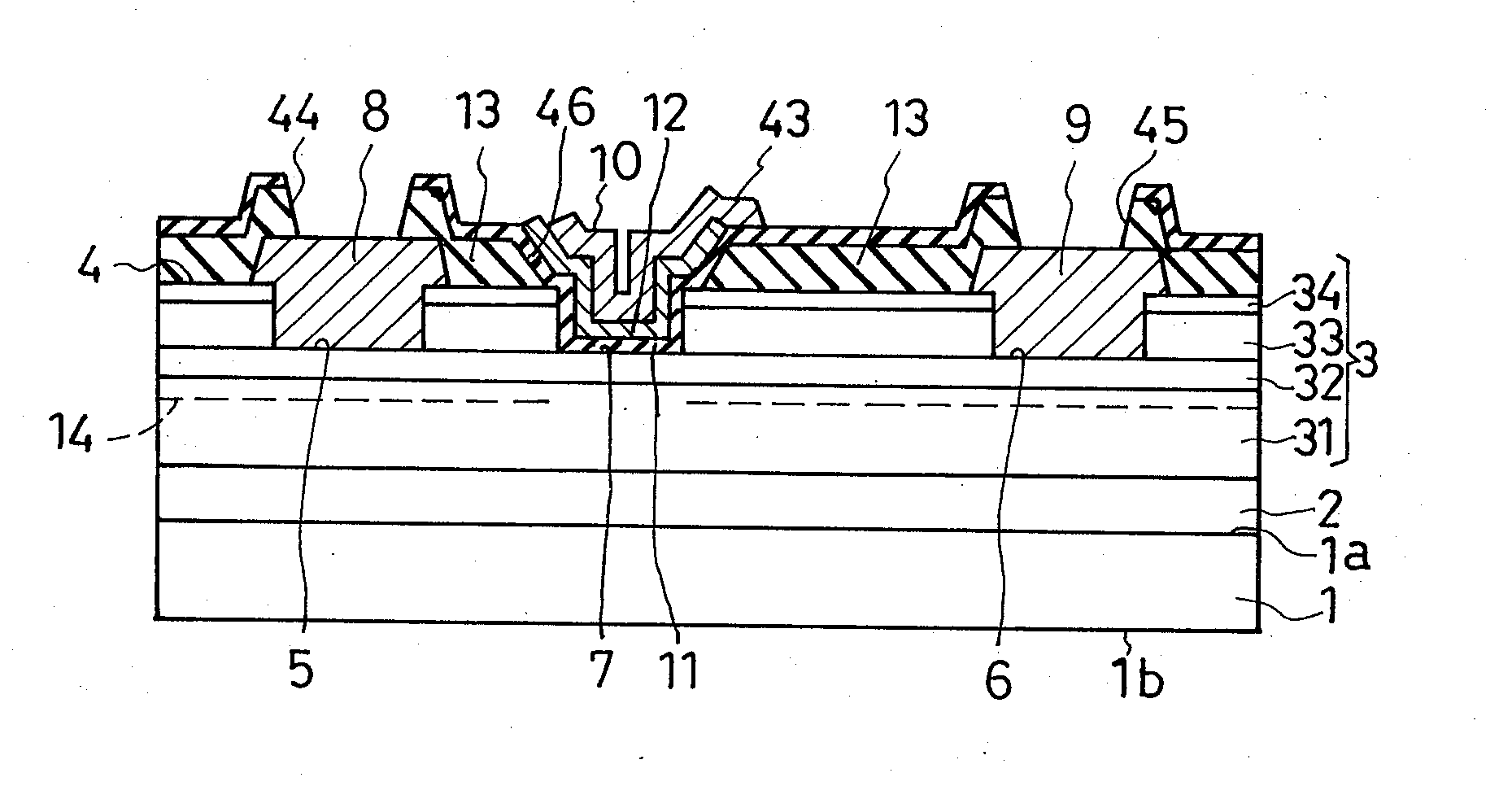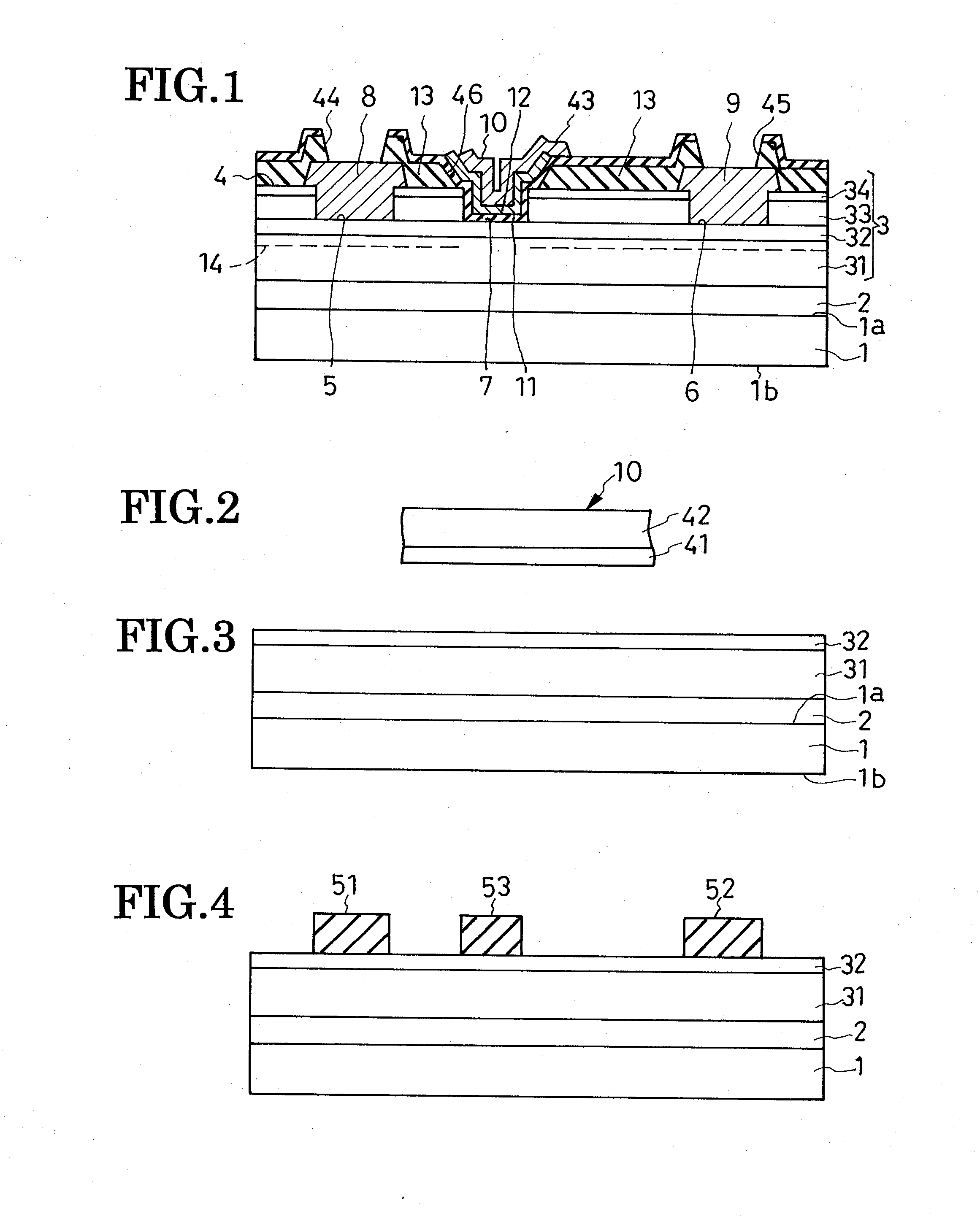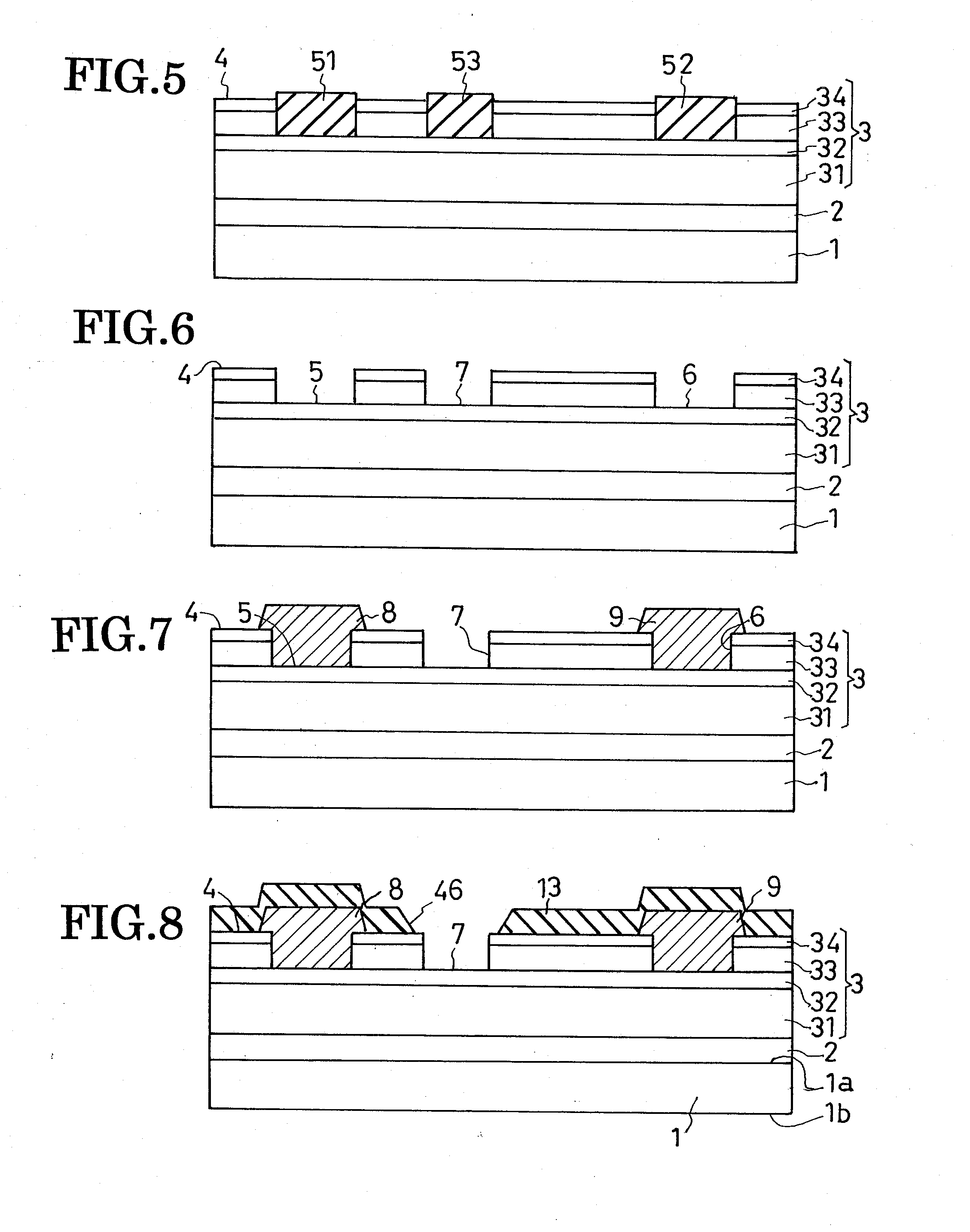Field-effect semiconductor device, and method of fabrication
a field-effect semiconductor and semiconductor technology, applied in the field of semiconductor devices, can solve the problems of easy triggering into action, inconvenient use of conventional normally-on hemts, and unnecessary complex associated circuitry
- Summary
- Abstract
- Description
- Claims
- Application Information
AI Technical Summary
Benefits of technology
Problems solved by technology
Method used
Image
Examples
embodiment
of FIG. 12
[0121]The second preferred form of heterojunction field-effect semiconductor device according to the invention features a modified insulating film 11a, all the other details of construction being as above described with reference to FIGS. 1 and 2. The modified insulating film 11a differs from its FIG. 1 counterpart 11 in underlying only the p-type metal oxide semiconductor film 12, leaving the protective film 13 exposed. Thus the insulating film 11a is held against the main semiconductor region surfaces defining the third recess 7 and the protective film surfaces bounding the opening 46. Being basically of the same construction as the first disclosed embodiment of the invention, this alternate embodiment offers the same benefits therewith.
Embodiment of FIG. 13
[0122]Another modified insulating film 11b is the sole difference of the device shown in FIG. 13 from that of FIG. 1. The modified insulating film 11b is similar to its FIG. 1 counterpart 11 in underlying the p-type m...
PUM
 Login to View More
Login to View More Abstract
Description
Claims
Application Information
 Login to View More
Login to View More - R&D
- Intellectual Property
- Life Sciences
- Materials
- Tech Scout
- Unparalleled Data Quality
- Higher Quality Content
- 60% Fewer Hallucinations
Browse by: Latest US Patents, China's latest patents, Technical Efficacy Thesaurus, Application Domain, Technology Topic, Popular Technical Reports.
© 2025 PatSnap. All rights reserved.Legal|Privacy policy|Modern Slavery Act Transparency Statement|Sitemap|About US| Contact US: help@patsnap.com



